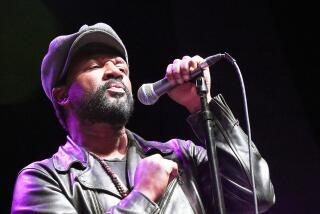Orchestra, Kahane Show Strengths
Taking the helm of the Los Angeles Chamber Orchestra for the first time in Orange County Thursday night, Jeffrey Kahane showed a classicist’s attention to clarity by elucidating elements of balance, line and detail.
But much of the roster at the Irvine Barclay Theatre seemed chosen to emphasize the experience of chamber music as the combined strengths of individuals. In the opening work, Dvorak’s Serenade for Winds in D minor, his fastidiousness resulted in a crystalline reading, breezy in its crisp rhythms and painted with dynamic subtlety. Beyond this, however, this piece relies greatly on the communicative abilities of first-chair players, particularly oboe, clarinet and horn. Here, Allan Vogel, Gary Gray and acting principal hornist Brad Warnaar responded with telling sensitivity.
Benjamin Britten’s Serenade for Tenor, Horn and String Orchestra, Opus 31, supplied the focal point of the evening. Unlike Dvorak’s, Britten’s Serenade bears no relationship to the lightweight outdoor entertainment that usually inspires that title. His speaks of night, using six texts by English poets, sometimes in its serenity but as often in its foreboding. As protagonists, tenor James Taylor and principal hornist Richard Todd combined for a dark but illuminating performance, sure in the most technically demanding gyrations and revealing in its drama.
Since Mahler’s notes implying possible revisions of his transcription for string orchestra of the String Quartet in D minor, D. 810, by Schubert suggest an unfinished work, Kahane took the liberty of thinning out some of the orchestration.
He restored the earlier quartet setting for the second variation of the movement based on the song “Death and the Maiden” and reduced forces to nine players for the Trio of the Scherzo. This took some of the pressure off sectional work, which in this composition proved a bit scrappier than elsewhere and recaptured some of the intense intimacy of the original. It also expanded the centrality of the guest concertmaster’s position, providing a challenge that was convincingly met by violinist Margaret Batjer.
More to Read
The biggest entertainment stories
Get our big stories about Hollywood, film, television, music, arts, culture and more right in your inbox as soon as they publish.
You may occasionally receive promotional content from the Los Angeles Times.






